Air Force Staff Sgt. Amber Felton, 96th Bomb Squadron independent duty medical technician squadron medical element, prepares a COVID-19 vaccine for distribution at Barksdale Air Force Base, La., Sept. 9, 2021.
Providing up-to-date information, news and original content on American Military issues.
Air Force Staff Sgt. Amber Felton, 96th Bomb Squadron independent duty medical technician squadron medical element, prepares a COVID-19 vaccine for distribution at Barksdale Air Force Base, La., Sept. 9, 2021.
Air Force Tech. Sgt. Kyle Shy, left, military working dog Eenoch, and Staff Sgt. Jesus Amaya, participate in a unit ruck march at Seymour Johnson Air Force Base, N.C., Sept. 10, 2021.
Navy Lt. Cmdr. Sarah Hull, left, a critical care clinical nurse specialist with the Naval Medical Readiness and Training Command, and Mattie Delahoussaye, a nurse manager at Ochsner Lafayette General Medical Center, access controlled substances from a storage unit for patients in Lafayette, La., Sept. 2, 2021.
Sept. 17, 2021 | BY Jim Garamone , DOD News
A stylized sun rose in the Pentagon's NATO Hallway as the flag of the Republic of North Macedonia joined that of 29 other NATO allies.

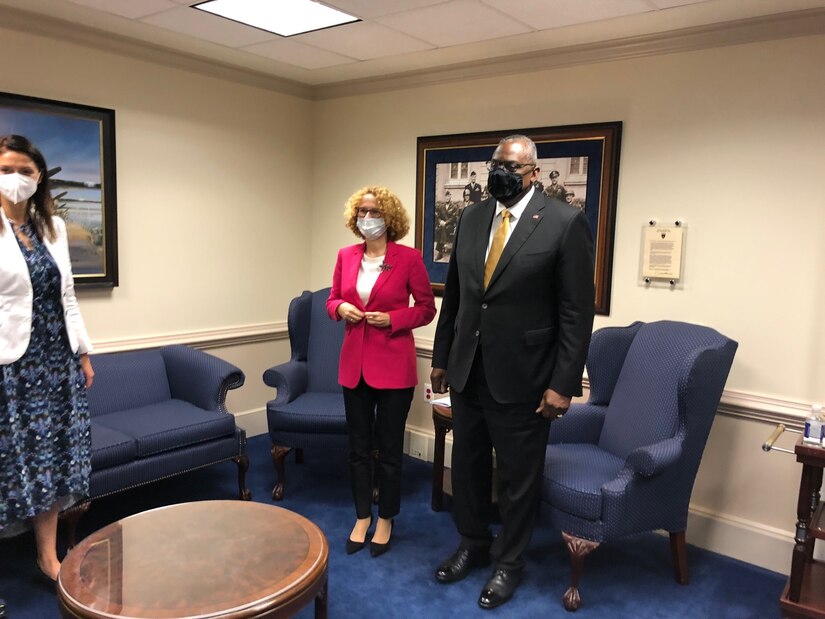
Sept. 17, 2021
|
This week, the Department of Defense (DOD), in coordination with the Department of Health and Human Services (HHS), awarded four contracts totaling $647 million to purchase over-the-counter COVID-19 test kits. DOD’s Defense Logistics Agency and Defense Assisted Acquisition Cell led these efforts. The procurements were funded through the American Rescue Plan Act to supply critical medical resources to the nation. DOD Awards $205.2 Million Contract to OraSure Technologies, Inc. to Purchase Over-the-Counter COVID-19 Test Kits DOD awarded a $205.2 million contract to OraSure Technologies, Inc., to purchase over-the-counter COVID-19 test kits. Deliveries of the 20.6 million test kits will commence October 2021 and ordering capability will continue until September 2022. DOD Awards $284.2 Million Contract to Quidel Corp. to Purchase Over-the-Counter COVID-19 Test Kits DOD awarded a $284.2 million contract to Quidel Corp. to purchase over-the-counter COVID-19 test kits. Deliveries of the 25.6 million test kits will commence October 2021 and ordering capability will continue until September 2022. DOD Awards $47.8 Million Contract to Abbott Rapid DX North America LLC to Purchase Over-the-Counter COVID-19 Test Kits DOD awarded a $47.8 million contract to Abbott Rapid DX North America LLC to purchase over-the-counter COVID-19 test kits. Deliveries of the 3.8 million test kits will commence October 2021 and ordering capability will continue until September 2022. DOD Awards $109.8 Million Contract to Intrivo Holdings Corp. to Purchase Over-the-Counter COVID-19 Test Kits DOD awarded a $109.8 million contract to Intrivo Holdings Corp. to purchase over-the-counter COVID-19 test kits. Deliveries of the 10 million test kits will commence October 2021 and ordering capability will continue until September 2022. |
Sept. 17, 2021
|
Department of Defense Spokesman Lieutenant Colonel Anton T. Semelroth provided the following readout: Under Secretary of Defense for Policy Dr. Colin Kahl hosted Minister of Defense Radmila Shekerinska of North Macedonia in Washington D. C. today to reaffirm the U.S.-North Macedonia defense relationship. Dr. Kahl reiterated U.S. support for North Macedonia’s Euro-Atlantic integration, ongoing progress toward its NATO capability targets, and greater interoperability with NATO Allies. The two leaders also discussed cyber defense cooperation and countering malign influence. Secretary of Defense Lloyd J. Austin III joined the delegation and reiterated his commitment to the U.S. security cooperation partnership with North Macedonia. The Minister’s visit included a flag unveiling ceremony in the Pentagon’s NATO hallway to commemorate North Macedonia’s 2020 accession into the Alliance. |
Sept. 17, 2021 | BY JIM GARAMONE , DOD News
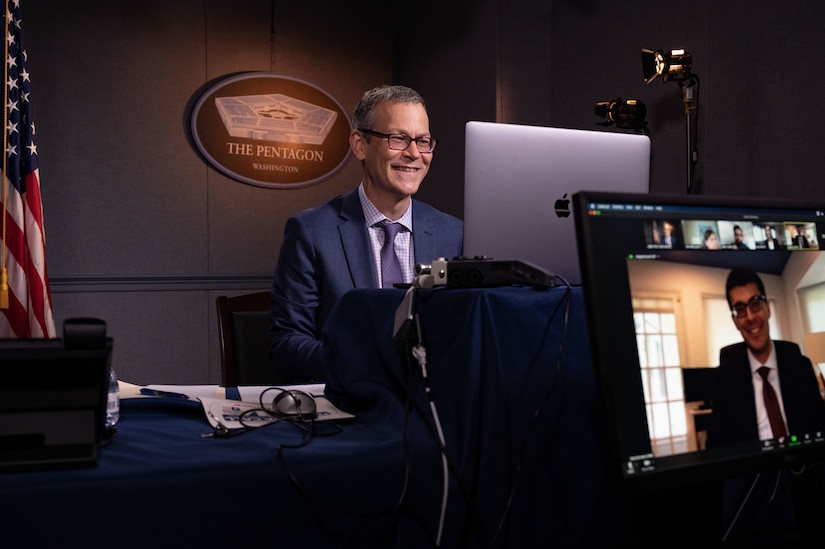
And NATO is taken seriously by U.S. leaders. Kahl stressed that American commitment to Article 5 of the NATO Treaty — an attack on one country is an attack on all — is rock solid and unshakable. "It is not a transactional arrangement," he said. "It is for the president of the United States, a sacred commitment."
Sept. 17, 2021
PRESS SECRETARY JOHN F. KIRBY: OK, good afternoon. Today I'm very honored and privileged to be joined by General Frank McKenzie, Commander of U.S. Central Command. The General's got some opening comment for you that will -- related to the August 29 airstrike that was taken in Kabul. And then he'll stick around for some questions. I will moderate those questions as we've done before.
And since we got pretty much a full house here and he's got limited time, I'd ask you to keep our follow-ups to an absolute minimum so that we can be as fair as we can to everybody. When the General's done, I'll come back up and brief on some other topics as well.
So with that, General McKenzie, can you hear and see me OK?
GENERAL KENNETH F. MCKENZIE: John, I can hear and see you fine. (Inaudible).
MR. KIRBY: All good here, sir. I'll turn the floor over to you.
GEN. MCKENZIE: Thanks, John. Good afternoon. I'm here to brief the results of the investigation I directed following the report of civilian casualties from our strike in Kabul on 29 August. Having thoroughly reviewed the findings of the investigation and the supporting analysis by inner agency partners, I am now convinced that as many as 10 civilians including up to seven children we tragically killed in that strike.
Moreover, we now assess that it is unlikely that the vehicle and those who died were associated with ISIS-K or were a direct threat to U.S. forces. I offer my profound condolences to the family and friends of those who were killed. This strike was taken in the earnest belief that it would prevent an imminent threat to our forces and the evacuees at the airport.
But it was a mistake and I offer my sincere apology. As the combatant commander, I am fully responsible for this strike and its tragic outcome. While I have begun with the most important findings of our investigation, I do want to provide the background leading up to the strike and include an explanation as to why we felt reasonably certain that this was a legitimate strike on in imminent ISIS-K threat with no indication that the strike would result in civilian casualties as we asserted in our initial statements.
The strike on 29 August must be considered in the context of the situation on the ground, in Kabul at Hamid Karzai International Airport following the ISIS-K attack that resulted it the deaths of 13 soldiers, sailors and Marines and more than 100 civilians at Abbey Gate on 26 August. And also with the substantial body of intelligence indicating the imminence of another attack.
In the 48-hours prior to the strike, sensitive intelligence indicated that the compound at point number one on the map, and let's bring the map up now, please. And we're just going to bring this up. Hopefully you have an opportunity to see here as we go forward. John, can you see the map there?
UNKNOWN MALE: (Inaudible), sir.
GEN. MCKENZIE: Hey, John, can you -- can you hear me now?
MR. KIRBY: Sir the press have hard copies.
GEN. MCKENZIE: OK, roger. Then I'm just going -- I'm going to continue based on that then, John.
In the 48-hours prior to the strike, sensitive intelligence indicated that the compound at point number one on the map was being used by ISIS-K planners, used to facilitate future attacks. We were also receiving a significant number of reports indicating multiple avenues of attached which were being planned simultaneously. Through which ISIS-K would attempt to harm our forces including with rockets, suicide explosive vests and vehicle born improvised explosive devices.
In fact, in the 36-hours preceding the strike our leaders on the ground at the airport and in the strike cell received more than 60 different pieces of intelligence related to imminent threats with some intelligence corroborating and some conflicting. With events observed from our UAVs, which were flying above Kabul throughout the day.
One of the most recurring aspects of the intelligence was that ISIS-K would utilize a white Toyota Corolla as a key element in the next attack. Because the compound at point number one was our strongest lead for this series of imminent attacks we initiated an intense surveillance of the compound with as many as six MQ-9 Reapers on the morning of 29 August. At 8:52 A.M. local time on 29 August a white Toyota Corolla arrived at point number one, the compound we believed to be a key area of interest associated with imminent threats to the airport.
Two adult males exited the vehicle, met with an adult male in the compound and received a bag from him. The Corolla then departed the compound heading south and we followed the vehicle. At 9:05 A.M. the Toyota Corolla picked up a third adult male carrying a bag at point number two and then continued south. At 9:35 the Corolla arrived at the compound at point number 3, which we now know to include an office of nutrition and education international. And all three adult males, in the vehicle, entered the building on the compound.
At 11:19 A.M. three adult males unloaded bags and jugs from the trunk of the vehicle before departing the compound at 11:22 A.M. heading south. At approximately this time U.S. forces were notified of a sensitive intelligence collection indicating that an ISIS-K cell leader, in Kabul, was dropping off supplies.
At 12:11 P.M. the Corolla arrived at point number four and at least two adult male occupants exited the vehicle in front of an office building before returning to their vehicle and departing at 1:27 P.M. heading west and then south.
At 2:00 P.M. the Corolla returned to the compound at point number three. Subsequently multiple adult males were observed loading the truck of the vehicle -- the trunk of the vehicle with items assessed at the time to be explosives before departing at 3:47 P.M. with four adult males heading north.
At 4:11 P.M. the Corolla returned to point number two and dropped off one adult male carrying a bag then continued north. After driving near point number one, the Corolla dropped off one adult male on the road at point number five, which is roughly several hundred meters north of point number one.
At 4:39 P.M. the Corolla dropped off its last passenger on the road at point number six.
At 4:51 P.M. the Corolla arrived at point number seven and back into a compound that was approximately three kilometers from the airport which was the closest it came to the airport all day. We were very concerned that the vehicle could move quickly and be at the airport boundary in a matter of moments. By this time we had observed the vehicle for about eight hours. While in the compound, the vehicle was observed being approached by a single adult male assessed at the time to be a co-conspirator. The strike was executed at this time because the vehicle was stationary and to reduce the potential for civilian casualties. A single Hellfire missile was fused to detonate inside the vehicle to further minimize the chance for civilian casualties.
It struck the vehicle of vehicle at 4:53 PM, which produced an explosive event and follow-on flames significantly larger than a Hellfire missile would have been expected to produce. It is my assessment that leaders on the ground and the strike cell had achieved a reasonable certainty at the time of the strike to designate the vehicle as an imminent threat to U.S. forces at the airport, and that they made a self-defense strike in accordance with established rules of engagement.
That assessment is based upon interviews with leaders on the ground and members of strike cell, on a review of the intelligence available to the team at the time of the strike and on the team's interpretation of how this vehicle and its occupants' actions were confirming the intelligence that they were seeing. It is further my assessment that the strike team were convinced at the time of the strike that the area was clear of civilians and that they had taken prudent steps in regards to weaponeering the strike to minimize the potential for civilian casualties. Finally, it is my assessment that they did believe, as reported, that there was a secondary explosion.
Our investigation now concludes that the strike was a tragic mistake. First, I will stress this was not a rushed strike. The strike cell deliberately followed and observed this vehicle and its occupants for eight hours while crosschecking what they were seeing with all available intelligence to develop a reasonable certainty of the imminent threat that this vehicle posed to our forces.
Second, while the initial reports indicated the secondary explosion, the initial investigation could only conclude that there was a possible to probable presence of external accelerants that could include either explosive material in the vehicle or ignition of the gas tank of the vehicle. Subsequent analysis could not rule out the presence of a small amount of explosive material, but determined that the most likely cause was the ignition of gas from a propane tank located immediately behind the car. Such an ignition would have created the brief but massive fireball oriented directly up and out of the compound that was observed in the video and displayed in this photo. If we could get that next photo up, please.
STAFF: (INAUDIBLE)
GEN. MCKENZIE: Finally, while this strike cell reported -- John, can you hear me OK?
MR. KIRBY: Yes, I got you, sir.
GEN. MCKENZIE: Roger.
Finally, while the strike cell reported the presence of two adult males, one inside the vehicle and one outside the vehicle at the time of the strike, the cell initiated a review of their footage immediately following the report of civilian casualties and determined that a few partially obscured forms were briefly visible moving in the compound. This led to my initiation of an investigation within 24 hours of the strike.
A comprehensive review of all the available footage and reporting on the matter led us to a final conclusion, that as many as 10 civilians were killed in the strike, including up to seven children. At the time of the strike, based upon all the intelligence and what was being reported, I was confident that the strike had averted an imminent threat to our forces at the airport. Based upon that assessment, I and other leaders in the department repeatedly asserted the validity of this strike.
I am here today to set the record straight and acknowledge our mistakes. I will end my remarks with the same note of sincere and profound condolences for the family and friends of those who died in this tragic strike. We are exploring the possibility of ex gratia payments.
And I'll finish by saying while the team conducted the strike did so in the honest belief that they were preventing an imminent attack on our forces and civilian evacuees, we now understand that to be incorrect. With that, I'm ready to take your questions.
MR. KIRBY: Thank you, General. Tom.
Q: General, this is a complete and utter failure. Can you explain how this possibly could have happened?
GEN. MCKENZIE: Well Tom, this particular strike was certainly was a terrible mistake and we certainly regret that, and I've been very clear that we take full responsibility for it. At the same time we were carrying out a number of complex operations designed to defend ourselves. We conducted a strike a couple of days ago at Nangarhar that was very successful. We conducted other operations across the battle stage to defend ourselves during this very difficult 48-hour period when so many imminent threats were manifested.
So while I agree with it, this strike certainly did not come up to our standards, and I profoundly regret it. I would not qualify the entire operation in those terms.
Q: And will anybody be held responsible?
GEN. MCKENZIE: We are in the process right now of continuing that line of investigation, and I have nothing for you now because that involves personnel issues.
MR. KIRBY: Please identify yourself and your outlet when you ask your question, David.
Q: David Martin with CBS News. So you said that the -- you started following this car after it showed up at the place associated with ISIS. In retrospect is that -- was that place associated with ISIS? And this was described as an over-the-horizon strike, which is what the U.S. is going to be relying on from now on in Afghanistan, so what does -- what does this incident say about the reliability of future strikes against terrorist threats in Afghanistan?
GEN. MCKENZIE: Sure, David. So I'll take the first part of your question and being with that. So point one on the map we do assess very definitely associated with ISIS-K. In fact a little less than 24 hours later rockets will be launched from that point against the airfield, so we had very good intelligence to make us think point one on the map was, in fact, an area where ISIS was centered, so I think that's -- that was a very good intelligence support of that belief.
Now with the second part of your question about whether this is will affect future OTH operations, let me be clear this was a self defense strike taken under self defense rules and engagement based on an imminent threat to attack us that is not the way we would strike in an over -- in an OTH mission going into Afghanistan against ISIS-K targets, the one thing that will not be a self defense strike. It'll be done under different -- it'll be different -- done under different rules of engagement, so -- and we'll have a lot more opportunity probably than we had under this extreme time pressure to take a look at the target.
To use a phrase that you'll be familiar with, to soap the target with multiple platforms to have an opportunity to develop extended pattern of life. None of these things were available to us given the urgent and pressing nature of the imminent threat to our forces.
MR. KIRBY: Phil.
Q: Are you considering reparations for the victims here? And what is what happened with this strike say to you about the over-the-horizon capability that we've been hearing so much about? What are the risks involved with carrying out strikes when you don't have people on the ground in Afghanistan going forward?
GEN. MCKENZIE: Sure. So as I said in my statement we are considering ex gratia or reparations for this, and that'd ultimately be a matter for policy, so we're in consultation with the office of the Secretary of Defense to determine a way forward there.
As you will also understand it's very difficult to reach out on the ground in Afghanistan to actually reach people, but we are very interested in doing that and we'll move on it based on our ability to do that.
So your question about this and OTH, I'll sort of echo what I said to David. I would reject a parallel between this operation and an over-the-horizon strike against an ISIS-K target, again, because we will have an opportunity to further develop the target and time to look at pattern of life. That time was not available to us because this was imminent threat to our forces.
It's important that I emphasize that. We did not have the luxury of time to develop pattern of life and to do a number of other things. We struck under the theory of reasonable certainty. Probably our strikes in Afghanistan going forward will be under a higher standard. That's a policy matter, not a purely military matter.
But I don't think you should draw any conclusions about our ability to strike in Afghanistan against ISIS-K targets in the future based on this particular strike.
MR. KIRBY: Sylvie.
Q: (inaudible) from AFP. You said that you had intelligence about a threat emanating from a white Toyota, so was it -- this intelligence was not good or there was another white Toyota which was dangerous and nothing happened from another white Toyota?
GEN. MCKENZIE: So I would tell you this. Clearly our intelligence was wrong on this particular white Toyota Corolla. At the same time we undertook a variety of things to make it hard for them to get at us during this period of time.
We closed the gates, which we didn't want to do at HKAI during this period of time as force protection. You know, we were very active with our ISR overhead, which we know is -- often has a suppressive effect on their activities.
We still took rockets the next day as you know, and they fired those rockets from near point one and from other places actually near the route of this vehicle. But I would tell you unequivocally in this case clearly the intelligence was wrong on this vehicle, and we certainly regret that as I've been very clear.
MR. KIRBY: Let me go to the phones. Jennifer Steinhauer, New York Times. Jennifer, are you there?
Q: My call's on -- my question's on a different matter, John, for after this.
MR. KIRBY: All right. OK. Luis Martinez, ABC. You there, Luis? OK, nothing heard. Nancy Youssef.
Q: Thank you. General, could you clarify a couple points for me? If I'm understanding you correctly, you followed the wrong Toyota Corolla from the beginning in. That is you weren't following one vehicle and mistaken it for another one? And also in your initial statement you said that there was no initial report of civilian casualties. It appears in a release some concern about civilian casualties very early on, so on what basis did you make that statement? And finally, was any of the intelligence that you were using gathered from the Taliban? Thank you.
GEN. MCKENZIE: So let me begin with the last question. Nothing we did was gathered from the Taliban, and I should be -- and I should be very clear about that. We selected this car based on its movement at a targeted area of interest to us -- a known targeted area of interest to us and we hold it throughout the day. Clearly based on the end result that was a mistake, and I have acknowledged that.
MR. KIRBY: OK, Meghann.
Q: Meghann Myers from Military Times. During this time were you tracking any other suspicious activity in Kabul that might have also been part of this threat? And do you have any intelligence from after this drone strike that suggests what happened to the imminent threat afterward?
GEN. MCKENZIE: Sure. So as I noted in my comments we had over 60 very, very high caliber reports of imminent threat to our forces in and around -- in and around Kabul. Typically, those are signals based, but there are also some human and other human intelligence as well. So, we have a variety of sources for that intelligence. We believe that the strike we took a couple of days prior up in Nangarhar actually had an effect on quietening down because we got a key attack planner in that strike. We believe that disrupted some of their plans.
Additionally, we did things to make it harder for them to -- to get to us. For example, we closed the gates. The gates, as we know, are a particular point where we're vulnerable. So, we decided not to process people, and we hunkered down for a little bit of time while this threat was still there. So, there were over 60 clear threat vectors that we were dealing with during this period of time, including, as I've noted before, the rocket attacks that occurred, you know, a little bit after this from locations that are displayed on the graphic that you have.
Thank you.
Q: A really quick follow-up. Not in terms of the number of threats, but the number of other cars or groups of people that you were following that day. Were you tracking anybody else this closely?
GEN. MCKENZIE: We tracked a lot of other people. We didn't track anybody as we -- as -- as closely as we did this because of the limitations on our resources. And frankly, you know, we -- we thought this was a good lead. We were wrong.
Q: Thanks.
MR. KIRBY: Alex?
Q: Thanks, John.
General McKenzie, this is Alex Marquardt from CNN. You mentioned that you know, immediately following an attack, you saw shapes in the video that led you to believe that -- that this necessitated an investigation, that there could have been more civilians there. On September 1, we heard from General Milley, who called this a righteous strike. And this was several days later. Did you at the time, several days later, also believe that this was a righteous strike? And -- and could you talk about your erosion of confidence over the -- the following -- the next subsequent two weeks of the investigation?
GEN. MCKENZIE: (inaudible) I think we issued a statement from U.S. Central Command about six hours after the strike, acknowledging the possibility of civilian casualties. So, we knew from the very beginning; there was a possibility of civilian casualties. I think we still thought we had good reasons to have taken that strike, and it took us gathering the facts to change that. We took -- we didn't think, as you will understand and appreciate, we didn't take the strike because we thought we were wrong; we took the strike because we thought we had a good target. It takes a little while to uncover some of those things.
We moved and worked as rapidly as we could. And actually, I think we worked extremely rapidly to get this information out and to make it public.
Q: That's fine. Thank you, John. Thank you, General.
So, despite numerous intelligence reports and warnings, on the 26th, we had that tragic attack on -- on the airport, 13 U.S. service members were killed, in addition to tens of Afghan civilians. Again, on the 29th, on this strike, another tragedy took place; as you said, 10 civilians were killed, among them 7 children. Is that a failure of intelligence or leadership in Afghanistan, and what do you intend to do about that? Thank you.
GEN. MCKENZIE: Well, I would tell you -- so we had two events, we had the attack at Abbey Gate, we had this --, and we had this strike. Now, the Abbey Gate attack, you're in -- you're in -- in combat with an enemy who is alive and has his own will. And sometimes that enemy is going to -- is going to -- his plans are just going to work. You can't cover every eventuality all the time, despite our very best efforts to do that. And we took every precaution that we could at Abbey Gate.
In fact, when we had -- when we had threats develop over the 48 hours that followed, as I've noted, we closed the gates in order to -- recognizing it would reduce our ability to bring people in, but at the same time, we thought that was the best thing we could do to actually reduce our attack surface, if you will, to protect our forces. There are also a number of attacks that were thwarted. These are two that you know about because they're high visibility, and we're talking about them. Others were forwarded and did not occur. So, the silence of those attacks should mean something, too.
Unfortunately, it's very difficult to prove the negative.
MR. KIRBY: Tony?
Q: Hi, sir. Tony Capaccio with Bloomberg, I've got two quick questions. Are you going to release the report of the investigation? Two, in your fact gathering, to what extent did you rely on The New York Times as extensive video investigation and then talks with NGOs or civilian eyewitnesses at the scene?
GEN. MCKENZIE: So, repeat the first question again for me.
Q: You'll be releasing the final report of the investigation.
GEN. MCKENZIE: So, the final report -- the report is a highly classified document. There'd be procedures that would have to be followed to declassify elements of that document if it were to be released. And I'll just leave that -- I'll just leave that question there. As we, in fact, worked our investigation, we used all available sources of information to inform us as we went forward, certainly that included some of the stuff The New York Times did. It also included our own extensive resources in this area, which we looked at. So, we tried to go everywhere we could and not overlook anything as we sort of tried to build a picture.
Q: Taliban at all aid in the investigation or the fact-gathering?
GEN. MCKENZIE: No.
Q: Thanks.
MR. KIRBY: Lucas?
Q: General McKenzie, Lucas Tomlinson, Fox News. Did you have forces on the ground that helped you conduct this strike?
GEN. MCKENZIE: No, we did not. As you know, at no time were our forces really away from Hamid Karzai International airfield. So, there was nobody there to -- nobody there on the ground to -- to have to play that role. I think you can see from the graphic that the position of the strike was about three to four kilometers to the west of HKIA. So no, there was -- there were -- there were -- there was nobody, either us or a proxy of ours, that was involved in this.
Q: That includes Special Operations Forces?
GEN. MCKENZIE: Explicitly.
Q: Can you talk about the challenges of conducting these drone strikes without any U.S. troops on the ground?
GEN. MCKENZIE: Well, so we conducted a very successful drone strike two days earlier up in Nangarhar province. And we got the target. And I think that had a significant event on dislocating and suppressing ISIS-K's ability to attack us during this period of time. So, we actually had success with that. This one we did not have success with -- success with, and we've been very clear about owning up to our responsibility in this regard.
MR. KIRBY: Lucas, you've had three questions. We've got time for just a couple more.
Tara Copp?
Q: Thank you. General McKenzie, Tara Copp with Defense One. Since there are no more U.S. forces on the ground, how would the ex gratia payments be provided to surviving family members if they are provided? And then I know you walked us through the timeline at the beginning of this, but can you give us the -- the overall amount of time spent actually identifying and confirming this target before a -- the strike was taken?
GEN. MCKENZIE: Sure. So, as for the ex gratia payments, we're working on that right now. And it will be difficult, as I -- as I noted in my remarks, I think, or one of the first questions, it will be difficult to do that without a presence on the ground. And that's just something we're going to have to work through. I don't have a better answer for you right now, other than I -- we recognize the obligation, and we'll continue to work -- we'll continue to work that problem.
So, in a situation like this, to go to the second part of your question, as you continue to look at the target over the course of the day, you know, you -- you begin to build probabilities, you begin to -- you begin to -- you begin to weigh what we have -- are we going to take a strike? Why -- why are we going to take the strike? When the vehicle came up to the final point, at point seven on your map, which is actually as I've noted as close -- the closest to the airfield it had been all day, we were very concerned about a white Corolla being involved in a -- in an -- in an attack. So, the cumulative force of all those -- all those, the intelligence that we gathered throughout the day, the position of the vehicle, its nearness to the airport, the imminence of the threat, and the other SIGINT that we're getting throughout the day all led us to the moment of deciding to take the strike.
Q: And -- and one last follow-up. Who actually ordered the strike? Who had the final authority to say fire?
GEN. MCKENZIE: So, in this case, the target engagement authority is held by the Over the Horizon Commander who's forward in the theater. The Over the Horizon Strike Cell Commander, I should say.
MR. KIRBY: OK. We got time for one more and then we're going to have to let the General go. Jeff Seldin, VOA.
Q: Jeff Seldin from VOA. Thanks very much for doing this General. Given how this Over the Horizon strike went. Where do things stand in terms of getting at least a closer presence, a closer basing agreement for future Over the Horizon strikes?
And we've been told that the Taliban had made various commitments to counterterrorism. I know you said that they didn't provide any information for this strike. But did they provide any sort of help in the closing days? In terms of preventing the threat against from ISIS K.
Or have they been helpful since then, in cracking down on ISIS K as they continue to plot against U.S. Western targets?
GEN. MCKENZIE: So, I think the best way I can answer your question is to sort of take the middle part of the question. In the final days, and really in the second half of our time at H-Karzai as we continued our evacuation. The Taliban were helpful in establishing an outer security perimeter, which actually, we believe prevented some attacks from developing. And look there's a downside of that, too.
It also allowed them to screen people that might otherwise have gotten to the airfield. And that's just a hard, harsh fact. And you have to balance those two-force protection of our forces. Which is supported by Taliban, external presence against the fact that it may prevent some people that you would like to bring out from being able to get to you unmolested.
And that's a difficult balance, I, frankly, came down that I wanted to protect our forces. And I needed that outer boundary. And to that degree, we were able to work together. I have no particular affection for the Taliban. And I don't know that they're doing anything at all for us right now. But those questions are probably better going to the Department of State.
Along with questions about basing and where we might be able to get closer basing than where we are right now. I know all of those things are actively being worked by our diplomats as we speak.
MR. KIRBY: Thank you, General. Appreciate your time this afternoon. I'll turn it over to you for any last closing comments you might want to make. Sir.
GEN. MCKENZIE: No, John. I just I appreciate the opportunity to come on and appreciate the opportunity to take responsibility for this. Because I do feel responsible for it. And I appreciate the questions from the media. Thanks, John.
MR. KIRBY: General, thank you very much. OK.
Q: Hey, John. Before we move on can you refered to a picture, which didn't come up. Are the -- are there other individual pictures of these little blocks in here.
MR. KIRBY: I'll have to check with Central Command, David. I'm sure if they were able to make that graphic, there must be imagery of it. But what resolution they're in and all that we'll check.
Q: Do you know if it was sent out to the networks or anybody?
MR. KIRBY: I don't believe it was. It was designed for this briefing, and we wanted to make sure you had hard copies of it. But we can check with Central Command. That's fair. So, the Secretary was briefed by General McKenzie this morning at eight o'clock on the results of his investigation. And on behalf of the men and women of the Department of Defense.
He offers his deepest condolences to surviving family members of those who were killed including Mr. Ahmadi. And to the staff of Nutrition and Education International, Mr. Ahmadi's employer. And you should have in your inbox's now a statement that I'm basically paraphrasing from. As the Secretary says, in the statement, we apologize. And we will endeavor to learn from this horrible mistake.
And to that end, he has directed a thorough review of the investigation just completed by U.S. Central Command. And he has asked for this review to consider the degree to which the investigation considered all available context and information. The degree to which accountability measures need to be taken and at what level.
And agree to which strike authorities, procedures, and processes need to be altered going forward. And he reiterates that of course no military works harder than we do. To avoid civilian casualties and when we have reason to believe that we have taken innocent life. We investigate it. And if it's true, we acknowledge it. Just like we did today. But he also notes that we have to work just as hard to prevent reoccurrence.
No matter the circumstances, no matter the intelligence stream, and certainly, no matter the operational pressures under which we labor. On another matter altogether. Today, the Secretary approved a request from the Capitol Hill Police Board to provide 100 members of the Washington DC National Guard, who will be stationed at the DC armory. As a Physical Security Task Force this weekend to augment law enforcement over the weekend.
Covering the September 18 demonstration on Capitol Hill. The DC National Guard will join a number of local law enforcement agencies in supporting the Capitol Police. Should the Capitol Police require assistance, they will first utilize local state and federal law enforcement capabilities. Before requesting the deployment of the Physical Security Task Force. The Task Force will only be deployed upon request of the Capitol Police.
To help protect the U.S. Capitol building and Congressional Office buildings. By manning building entry points and screening individuals that are seeking access to the building. They will be unarmed. With that, I can take some questions.
Yes, Travis.
Q: I had a question about that regard troops went to the hill. I would say back in January it became kind of a big issue. That there were veterans and I think a couple cases of active duty troops involved in the January 6th incident. I'm just wondering if there have been any efforts to say something to troops ahead of this.
About if they're thinking about going what they should consider first. And if that's too many levels below the code to speak from the podium. Can you talk at all about what the Secretary might say to the troops who are thinking about going to a rally like this on Saturday?
MR. KIRBY: I don't know of any official communication that's come out from the department at any level, specifically to troops who might consider being a part of a protest. There are already limits to what they can do in uniform. And clearly political protest is one of those things are not allowed to do.
But I don't know of any specific, you know, guidance that's been issued. They are American citizens. And in their off-duty hours, they're allowed to participate in social events like that. Social political events like that. But they can't do it in uniform. And obviously, if should things turn violent, then they will be held accountable for any violence that they participate in.
Of course, Travis, nobody wants to see it get to that point here. And, and I, the Secretary has confidence that the men and women of the department understand the limits and the constraints on their behavior in these kinds of circumstances. Phil.
Q: Is the Secretary satisfied with the level of accountability so far from this investigation? Or is he concerned that there hasn't been accountability following the strike?
MR. KIRBY: I'm not going to characterize it one way or the other right now. So, as I said, just a few minutes ago, he's asked for a review of this investigation. And one of the things that he wants to review to do. Is take a look at accountability and the degree to which accountability measures need to be considered. And if so, at what level. So, I'm not going to get ahead of his decision making on that.
Q: Has he ruled out firing anybody?
MR. KIRBY: I'm not going to get ahead of the Secretary's decision making. That's why he's asked for a review. So, he can get a look. Yes.
Q: Mike (inaudible) from the Washington Examiner. Will there be a review of the first strike at all?
MR. KIRBY: The one in Nangarhar?
Q: Yes.
MR. KIRBY: No. No. Yes. Back there.
Q: So...
(Inaudible)
Q: ...today. The Joint Operations Command, announced an agreement -- Security Agreement with the U.S. To reduce the combat troops in (inaudible) airbase and Irbil by the end of September. The OIR statement, didn’t mention any reduction of the troop level? Can you please clarify what's going on in Iraq now?
Why there is like misunderstanding between the Iraqi part and the coalition? And also, can you confirm that their level of troops will remain the same through at least September in Iraq?
MR. KIRBY: I can confirm that. And I -- you're going to have to let me take your question on the statements. Because I just haven't seen those today. And I don't want to venture a guess right now. So let me take your question. We'll get you an answer back.
Q: But can I? If you can just explain a little bit about the capabilities that the U.S. forces will maintain after December in Iraq? Will they be able to conduct airstrikes targeting?
MR. KIRBY: Yes, we're. Obviously, we're still in technical talks with the Iraqis about the presence going forward. I'm not going to get ahead of those talks or what decisions they might make. So, I think it's better for me to just leave it where we are right now.
Q: And the shift of the mission, the nature of the mission in Iraq. Will it affect in any way the mission in Syria?
MR. KIRBY: Again, I'm not going to get ahead of decisions that have been made or policies that haven't been decided upon. We're in talks with the Iraqis about what the posture is going to go forward. We have a much smaller presence in Syria. But it's aligned to the same mission.
Which is to continue to counter ISIS and their influence in both Iraq and Syria. So, while they are different places, different force postures, same ultimate goal. But I'm not going to speak about the policy decisions or operational decisions that haven't been made yet.
Janne.
Q: Thank you, John. Recently North Korean leader Kim Jong-un. Sent a victory message to the Taliban and urging the U.S. military to quit. What is your comment?
MR. KIRBY: I did not see the comment by Kim Jong-un. So, he can speak for his own communications with the Taliban. What I can tell you is that we no longer have a presence on the ground in Afghanistan. Our involvement in that war on the ground is over.
And the President made clear his intention to do that. To retrograde, the withdrawal is done. As well as the military part military element of evacuating Americans and Special Immigrant Visa holders. That said the U.S. government is still very much going to stay involved.
And trying to help people leave, who want to leave and who qualify to leave. And as you heard General McKenzie, say, we're also going to stay focused on the terrorist threat that could emanate from Afghanistan.
Yes, Sylvie.
Q: Hello, John. I would like to ask you a few details about the AUKUS agreement announced yesterday on the military side. The Australian Defense Minister spoke about basing. Does it mean that the U.S. wants to deploy U.S. troops on Australian soil permanently?
MR. KIRBY: Well, we already have a rotational Marine Corps deployment there which the Australians have been incredibly gracious and generous and helping host. And I don't want to speak for, again, decisions that haven't been made but one of the things that was discussed was the opportunity to expand that presence in Australia and that access to Australia, but no decisions came out of yesterday's Ausmin 2+2, but that is something that I think you can expect we're going to continue to talk to the Australians about going forward.
Q: And in terms of missiles, did you -- did you get any...
(CROSSTALK)
MR. KIRBY: Well, again, I think you heard both the secretary and the minister, Minister Dutton talk about this yesterday, that there was a range of capabilities that -- that we're going to continue to explore with our Australian allies. No decisions have been made. The only decision really in terms of capabilities that came out of yesterday was, of course, the decision to help the Australian navy acquire nuclear submarines. But as part of the meeting yesterday, they talked about a range of other types of capabilities that we might want to continue to pursue in Australia. But those discussions are really just starting. And, again, these are going to be bilateral decisions made by both the United States and Australia going forward, outside of AUKUS, of course. Great Britain will be involved in AUKUS-related things as well, but my point is these are sovereign decisions that these nation states have to make. And I just don't have anything additional to read out today.
Fadi.
Q: Thank you, John. I have two separate questions. The first one is on the 26th -- 29th attack. As General McEnzie said, the statement from CENTCOM on that day, at the end it mentioned the possibility of civilian casualties. So I'm still wondering why General Milley, on September 1st, still called this -- this strike righteous -- righteous attack.
MR. KIRBY: I think General McEnzie answered that question quite well, Fadi. I'm not sure that I can add to that. And I'm not going to speak for Chairman Milley. But as you saw from General McEnzie, within 24 hours of an indication that there could have been civilian casualties, he launched an investigation, as is his responsibility. And he just completed it. And they -- they did it fairly quickly, but I think they wanted to take the time to be as contextual as possible. So I think he already spoke to that.
Q: Yes, but, I mean, you said that within 24 hours, but General Milley came out on September 1st, that's more than 24 hours, and still called...
(CROSSTALK)
MR. KIRBY: Again, Fadi, again, I'm not going to -- I'm not going to re-litigate the past statements here. As General McEnzie mentioned, every leader in the department that spoke to this in the moment that it was spoken to was speaking to you in good faith based on the information that we had. And that includes me, by the way. Things that I said obviously have not turned out to be correct.
But it was done in as a good faith an effort as possible, to be as transparent as we could with what we knew at the time. Obviously, we now know more things and different things that has completely changed the character of this strike. And, again, we're trying to be as open and transparent as we can when we know things.
Q: And on (INAUDIBLE), it seems France just recalled its ambassador to the U.S. And this is a fallout from the submarine issue. So in your -- in the department, you know, that the government effort to bolster Australia's defenses in the Indo-Pacific, strategy to counter China, it seems you're having long issue with France. How concerned are you, first, about the future of defense cooperation with France? And was the French government notified ahead of time of this move?
MR. KIRBY: Senior administrate -- senior administration officials have been in touch with their French counterparts to discuss this arrangement including before the announcement. The Secretary spoke with the French Minister of Defense this morning and I won't characterize the French side of course, but the -- it was clear from the discussion that there is still much work to do in terms of our defense relationship with France.
I mean more things to work on. There are -- that there are opportunities and shared challenges and shared interest that both Ministers committed to continue to explore. And there's -- as the President said, there's no regional divide that separates the interest of our Atlantic and our Pacific partners. Ensuring a free and open Indo-Pacific is the shared interest between the United States and Europe. And we will continue our close cooperation with NATO and the E.U. and other partners on that kind of an endeavor.
Tony.
Q: Australia, I had a follow-up there. Going forward, now, what role will the Pentagon and the Navy play with Australia in terms of smoothing the way for -- the introduction of nuclear submarines? They're going to buy diesel now they're going to buy nukes. Over the next 10 months or so what's going to happen? What's the role of the Defense Department and Navy?
MR. KIRBY: Yes, Tony, obviously we're still -- we're going to be putting together the framework of what this is going to look like, this process going forward. But I think you can obviously expect that the United States Navy and Navy nuclear reactors will be very much involved in helping with the acquisition of this capability.
Q: Are there any particular questions that need to be answered, did the Navy set inspection but Australia's capability to build nuclear submarines? Are the contractors to build stuff --
MR. KIRBY: Yes I don't think all that's been worked out right now, Tony, but yes, there's a lot of questions that have to be answered here. I mean this is a -- this is a significant undertaking and it will add significant capability to the Australian Navy as well as reach. And there's going to be a lot of questions and technical details that have to be worked out.
But to your first question, of course the United States Navy and Navy nuclear reactors will be very much involved .
Q: Maybe ask a -- I'd like to ask you a Milley question -- a General Milley question on the controversy with the book. It the Department of Defense mulling, reviewing and releasing in redacted form the transcripts or classified notes of the Milley China conversations that were leaked to the -- to Woodward for his book? Any thought about just releasing them like the White House did last year with the Trump President of Ukraine transcript?
MR. KIRBY: I know of no such plans to do that and I would refer you to the Joint Staff to speak to whatever notes they might have on a counterpart call that the chairman conducted.
I think I get to the phones here. Jennifer, are you still there?
Q: Yes, I am, thank you. About the Afghanistan refugee situation on bases, are you still monitoring and do you know if more measles or other communicable disease cases? And are obligated to report those, at least domestically, to local health officials?
MR. KIRBY: Well, we’re working with HHS very closely so of course if we find any additional cases we certainly are keeping HHS informed. And we're obviously making sure that tot eh degree there are any cases on the domestic bases that our base commanders and people that work and families live there are kept abreast. I don't have any additional updates in terms of additional cases to report out to today.
But, again, we still remain at a pause for flights coming from any of the lily pad locations overseas to the United States as we continue to work this out with HHS.
Meghann.
Q: So all of the services have release their mandatory COVID vaccination policies. The Army is giving itself, at least it's Reserve and National Guard components, through the end of June to get fully vaccinated. Does the Secretary have any concerns about that long of a timeline given that there's been a surge in the past month or so of military deaths and the bulk military deaths have been in Army Reservists and National Guardsmen?
MR. KIRBY: The Secretary has made it clear that he expects the services to move our as energetically as they can on this because he is concerned about the rise in deaths and the impact that the Delta variant has had on the force. That's one of the driving reasons why he went to a mandatory regiment for, in this case, the Pfizer vaccine. He had -- he spoke to the service secretaries just a few days ago about his very topic and they reported out to him their progress and what their implementation guidelines were.
He's satisfied that they are working hard enough and fast enough to try to improve the vaccination population inside each of the services. But it's not something that he's just going to lose focus on. He's going to continue to engage with the services, continue to get updates and certainly if the Secretary feels like a change in implementation needs to occur in any one services on whatever the data is or what the rate of infection, certainly the rate of deaths. I mean he will absolutely do that.
Yes, Phil.
Q: Is the secretary satisfied with the -- where the authorities are right now? To conduct any further strikes against ISIS-K in Afghanistan? Or given what's been uncovered here, is there some thought to kind of raise -- elevating the ability to authorize another strike?
MR. KIRBY: Well, without getting into specific decision on authorities, I know that he has had conversations with General McKenzie and with General Milley about the authorities going forward and I can tell you that with respect to the authorities going forward, particularly in Afghanistan, yes the Secretary is very comfortable with what the arrangement is.
Secondly, as I announced at the top, there in this review that he has ordered on this particular investigation he does want the review to factor in any changes in procedures processes and authorities for strikes going forward that might be -- that might be recommended. So it's going to be part of the review.
Yes, in the back there.
Q: On AUKUS the submarines, long range missiles, the rotation of air, sea, and naval forces. What it is about the deployment and the rotation of these forces that's going to help the U.S. achieve its strategic goals in the Indo-Pacific?
MR. KIRBY: It's not about just achieving U.S. goals in the Indo-Pacific. It's about and you heard the secretary talk about this yesterday, it's about improving what he calls integrated deterrence which is rally about being able to in a networked way improve the capabilities of not just all the joint force but our allies and partners as well. And, as he said, this will improve the Australian Navy's reach and it'll improve their capability.
And in a highly contested security environment as we have seen in the Indo-Pacific, the Secretary believes, the United States believes that this is a worthwhile endeavor.
Yes, Matt.
Q: More on the National Guard. Was the initial request that came in from the Capitol Police to include arms National Guardsmen and was that something that was considered by the Secretary?
MR. KIRBY: Yes, I've see the press reporting on this, Matt. I'm not going to get into the sausage making process. What I can you is we did approve an official request for a physical security task force and they will be at the armory and they will be unarmed.
Q: Strictly unarmed.
MR. KIRBY: Strictly unarmed, yes. OK, thanks everybody, appreciate it.
Marine Corps Sgt. Timothy Benford participates in a tactical combat causality care practical application exam at Camp Hansen, Okinawa, Japan, Sept. 9, 2021.
A soldier jumps from an aircraft, not shown, in the Netherlands, Sept. 14, 2021, during Falcon Leap, NATO’s largest technical airborne exercise. The event also highlighted interoperability while observing the 77th Anniversary of Operation Market Garden.
Navy Chief Petty Officer Orette Ayton sets up a tent during medical skills training at Camp Foster, Okinawa, Japan, Sept. 15, 2021.
Soldiers fire an M3 multi-role anti-armor antipersonnel weapon system during live-fire training at Joint Base Elmendorf-Richardson, Alaska, Sept. 15, 2021.
Sept. 16, 2021 | BY David Vergun , DOD News
National POW/MIA Recognition Day — which this year
falls on Sept. 17 — was established in 1979 through a proclamation
signed by President Jimmy Carter.
The proclamation reads, in part: "In each of America's wars, our
prisoners of war have been called upon to make uncommon sacrifices. Upon
them has fallen the arduous responsibility of defending American ideals
under the absolute control of the enemy.
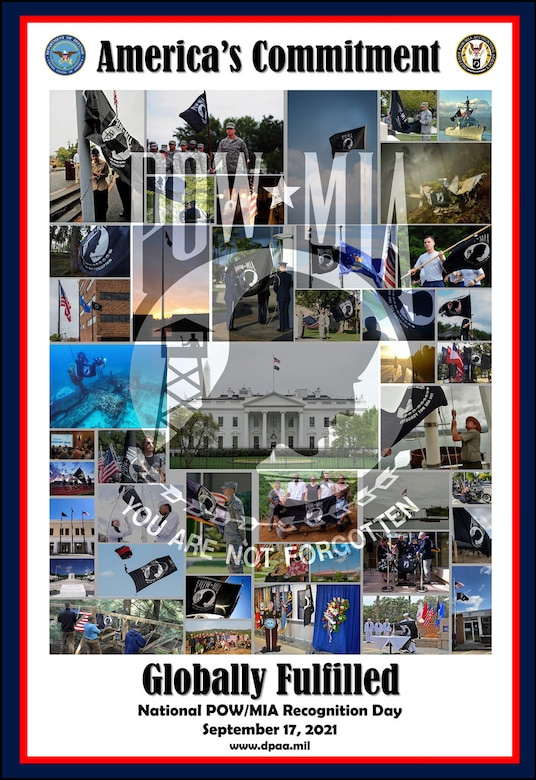
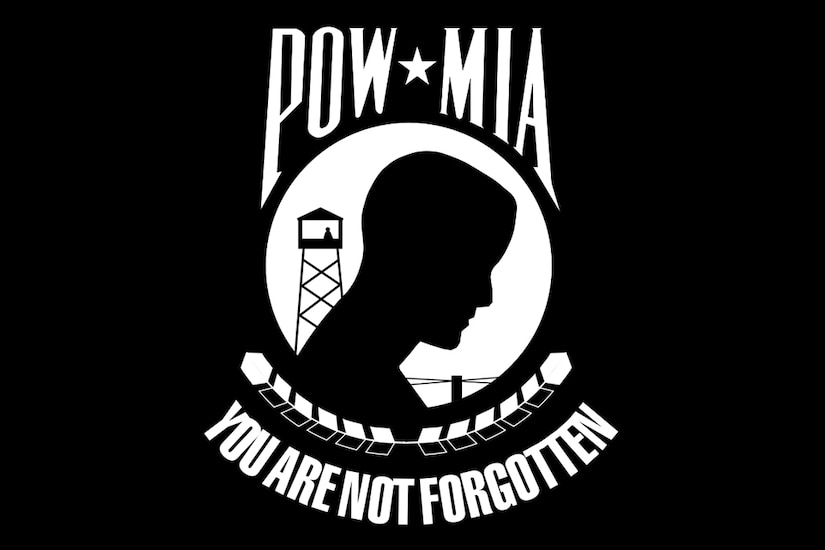
The POW/MIA flag, also known as the National League of Families
POW/MIA flag, can be seen flying in Defense Department installations and
in many other government and private locations. It flies directly below
the United States flag during the observance day. If there are two
flagpoles, it is always flown to the viewer's left of the U.S. flag.
Besides being flown on National POW/MIA Recognition Day, Congress in
1998 legislated that it can also be flown on Armed Forces Day, Memorial
Day, Flag Day, Independence Day and Veterans Day. In 2019, Congress
authorized the POW/MIA flag to be flown at certain locations on all days
that the U.S. flag is flown.
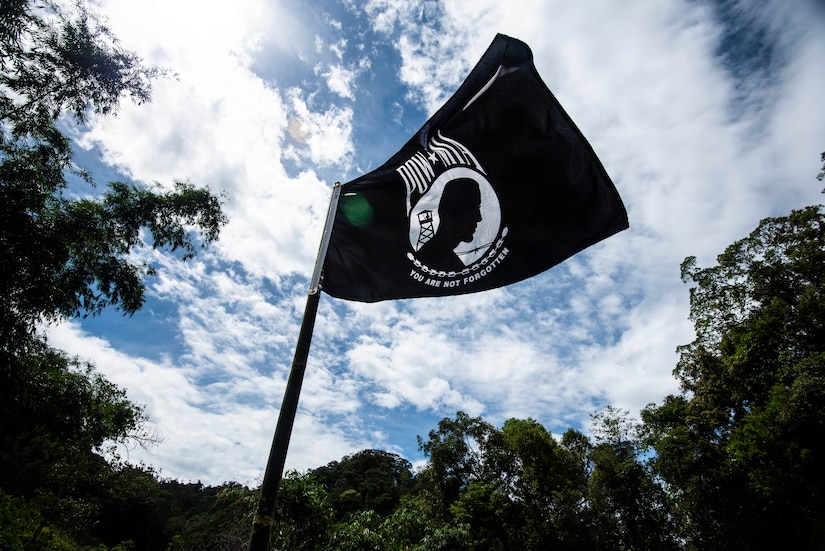
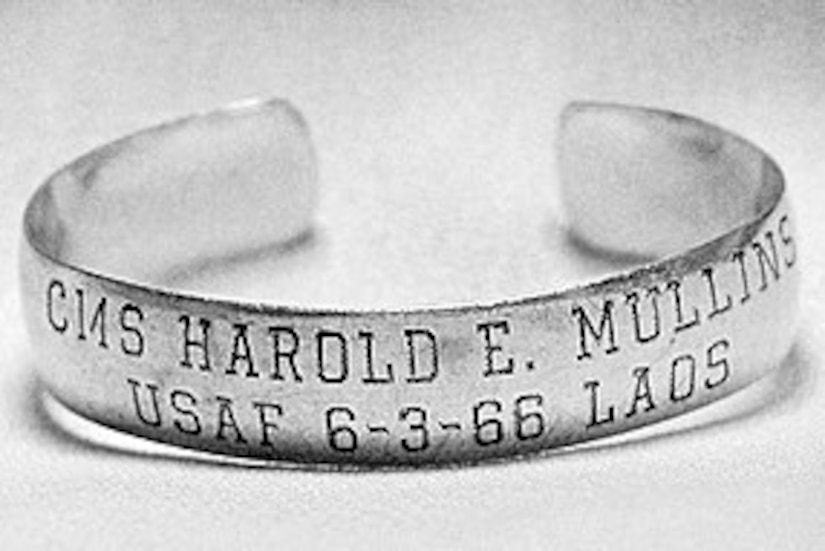
Sept. 17, 2021 | BY David Vergun , DOD News
The Defense POW/MIA Accounting Agency has identified most of those killed on the USS Oklahoma when the Japanese attacked Pearl Harbor, Hawaii, in 1941.
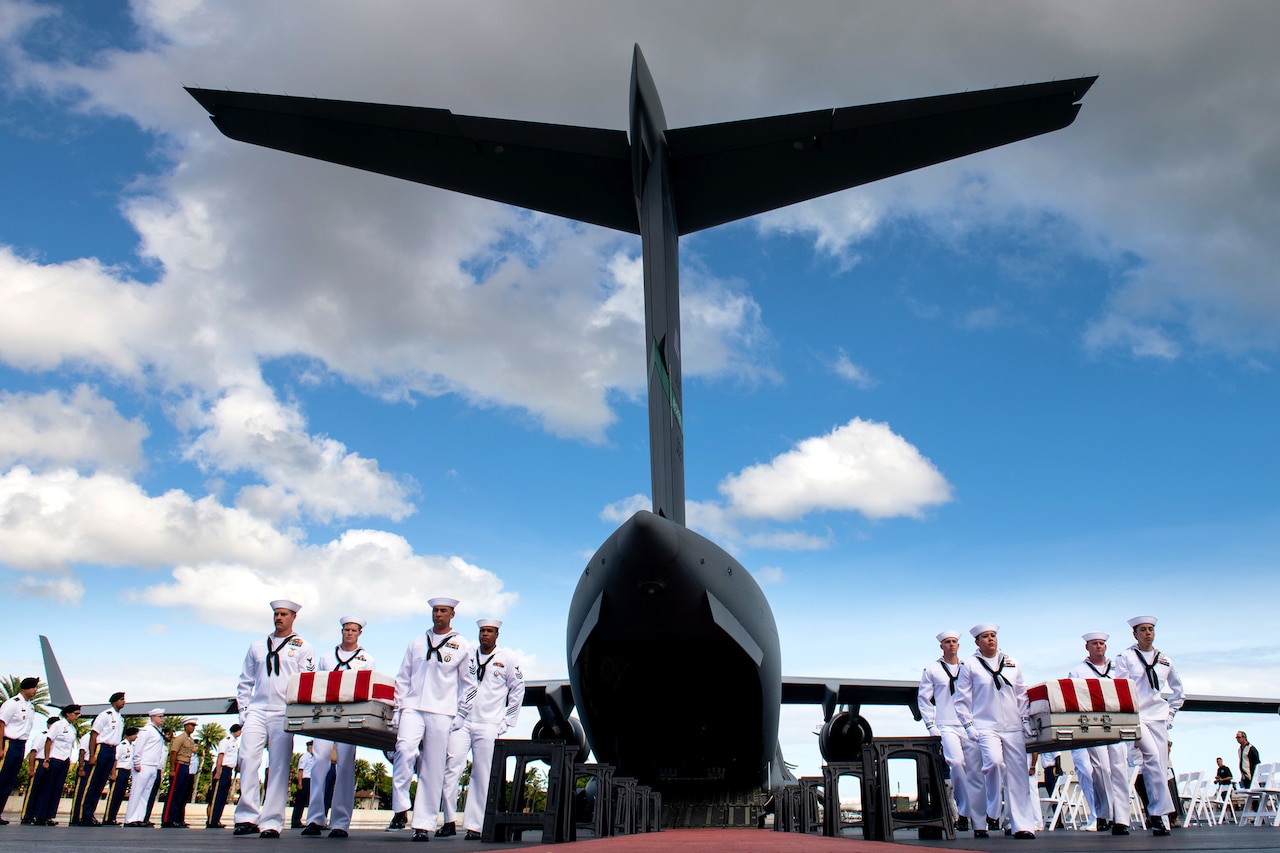
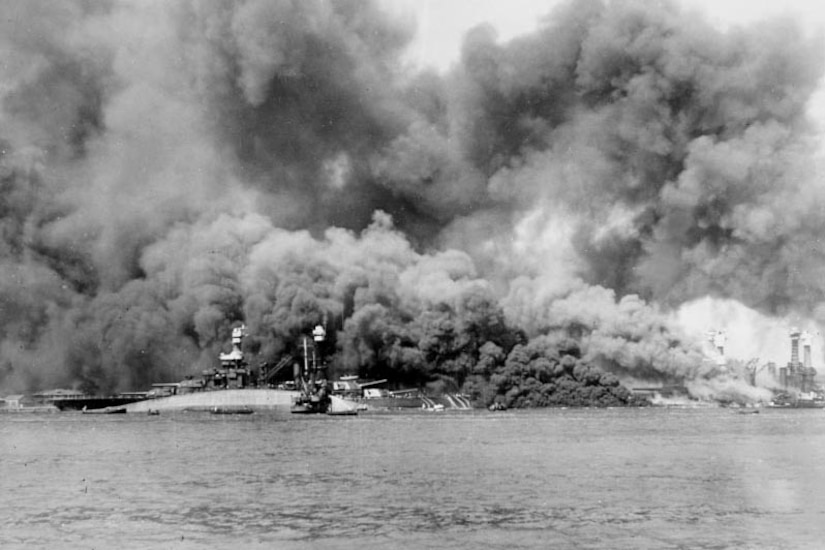

DPAA has been working to identify the remains since 2015 when the USS Oklahoma project began. Scientists from the Armed Forces Medical Examiner System have used mitochondrial DNA and autosomal DNA analysis.
Marines conduct amphibious training during RECONEX, a two-week exercise with Indonesian marines, at Marine Corps Base Camp Pendleton, Calif., Sept. 8, 2021.
Army Master Sgt. Kristen Roles prepares to attempt an overhead press during an exercise drill at Boone National Guard Center in Frankfort, Ky., Sept. 7, 2021.
Soldiers assigned to the 1st Cavalry Division celebrate the division’s 100th birthday at Fort Hood, Texas, Sept. 13, 2021.
Sept. 17, 2021 | BY C. Todd Lopez , DOD News
Back in July, the Defense Department released the Active Duty Spouse Survey — something it does every two years. In the past, the survey was available by invitation only to a select few military spouses. But not this year.
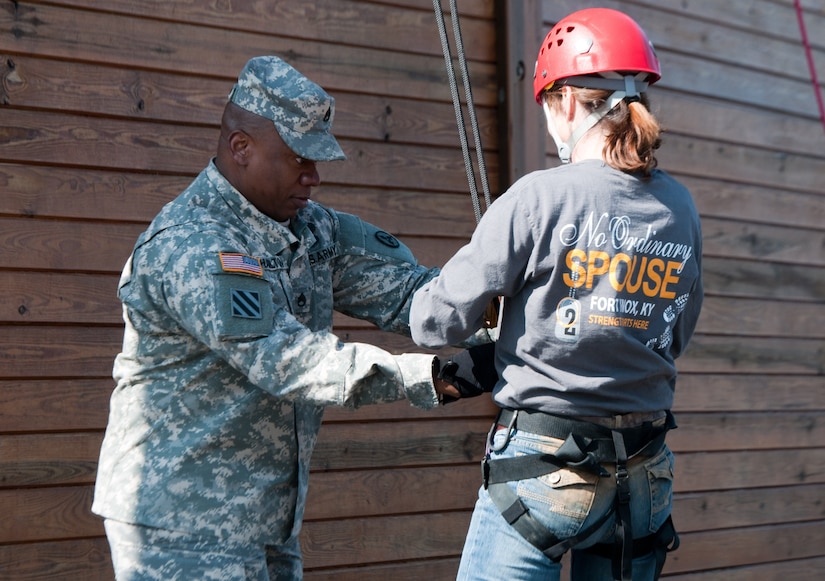
Through late October, all spouses of active-duty military members — more than 600,000 of them — can visit the OPA Survey Portal and tell the Pentagon what they think about being 'married to the military.'
The results of the survey will be used to give Pentagon decision-makers a better idea about how they can adjust family policy and programs in the coming years — especially in relation to military benefits, financial stability, spouse employment, child care, and the overall health and well-being of spouses, children and families.
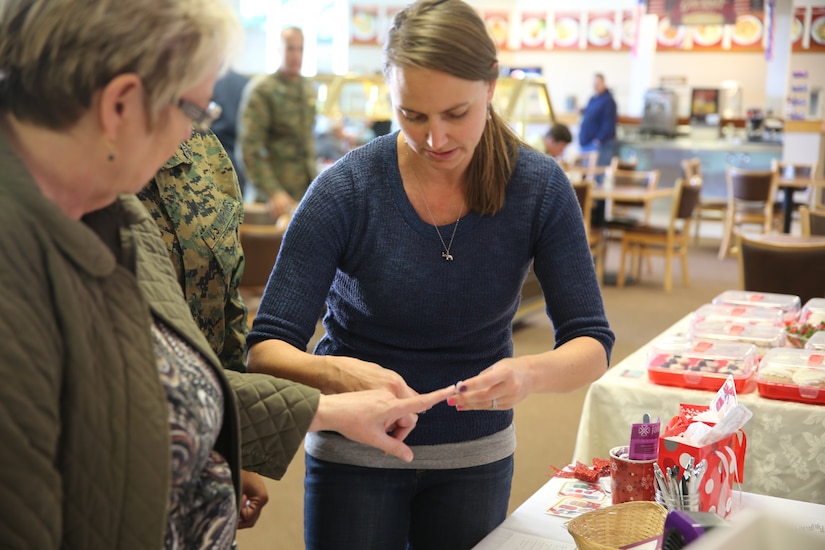
"Leadership across the DOD takes the [survey] seriously," said Eddy Mentzer, the associate director for strategic initiatives within DOD's military community support programs office. "From the office of the secretary of defense to the military service headquarters, [survey] results are shared and utilized to shape future programs and resources. The survey results are also shared outside the DOD with Capitol Hill and the White House."
This year, some military spouses will still get mail and/or email invitation to participate. Those spouses will get a "ticket number" they can enter to begin the survey. All military spouses can get a ticket number by selecting "click here" at www.DoDsurveys.mil. The DOD ID number on the back of the spouse's common access card, along with the date of birth, will be used to access the survey.
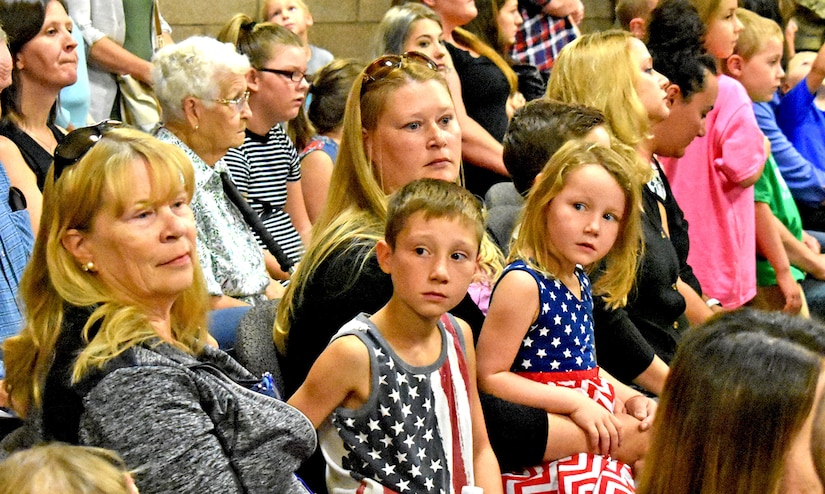
While some military spouses will remain silent about life being married to an active-duty service member, others will want to let the Pentagon know directly what's grinding their gears. Mentzer said more spouses should let military leadership know what's going on in the trenches at home.
"While military spouses share common experiences, each military spouse has a unique story," Mentzer said. "Military life can result in a number of challenges. By allowing their voice to be heard and sharing their experiences, military spouses can ensure they are able to have a voice in the future programs that support them."
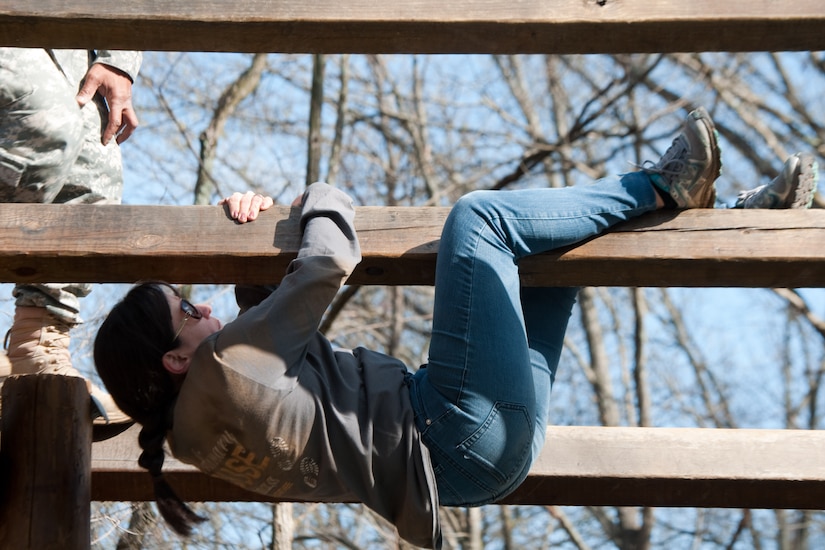
According to the Defense Department's Office of People Analytics, which is conducting the survey, the data collected is reported in aggregate to protect the identity of participants. That aggregate data will eventually be made available publicly so participants can see how other military spouses responded. Information from the 2019 survey is available online at the link below.
FOR MORE INFORMATION